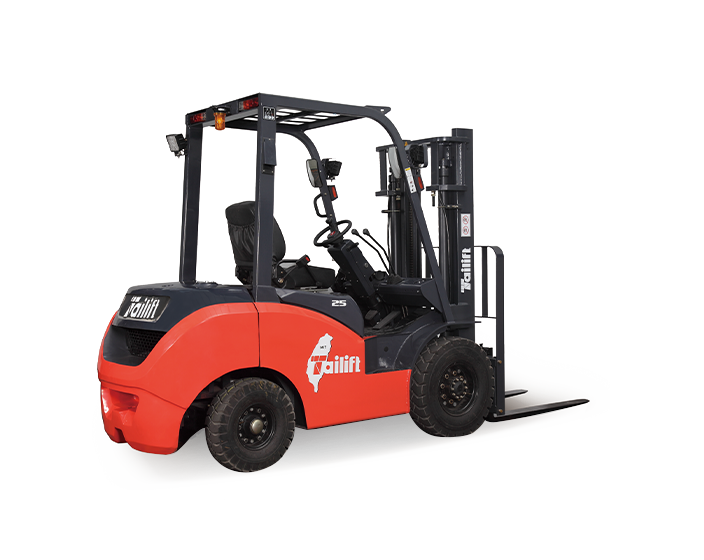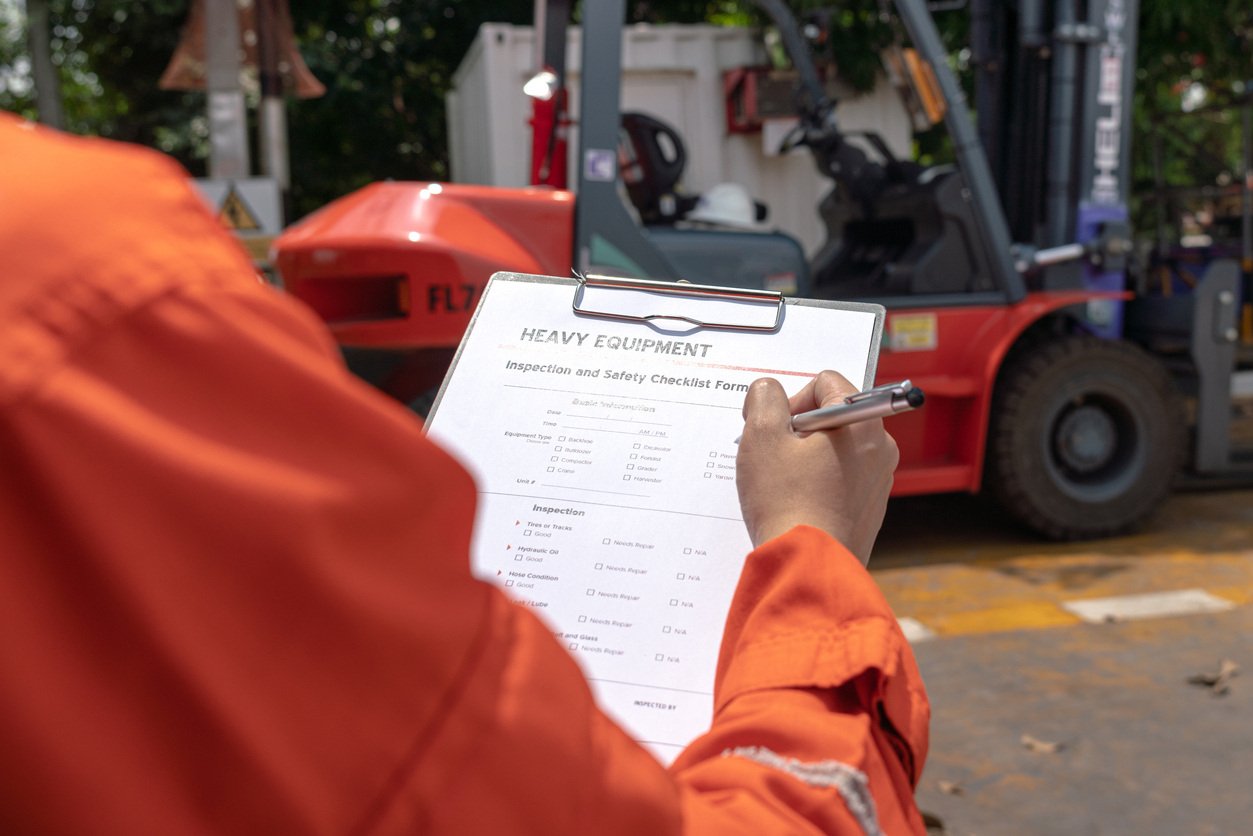4 Signs It’s Time to Upgrade Your Forklift Fleet
Your forklift fleet is central to keeping your business productive and efficient. But like all equipment, forklifts have a limited lifespan. Holding onto old or unreliable lift trucks can lead to frequent breakdowns, higher maintenance costs and potential safety hazards. If your forklifts are consistently in need of repairs or no longer meet your operational needs, it may be time to consider an upgrade. In today’s blog, we’ll discuss the four key signs that indicate your fleet may need an update. By recognizing these signs, you can make informed decisions to ensure your business continues to run smoothly and efficiently in the future.
Aging Forklifts: How Old is Too Old?
How can you tell if a forklift is too old? A good starting point is to consider its age and usage. According to a survey by Peerless Research Group and Modern Material Handling, most lift trucks are replaced every ten years or more. However, this varies depending on factors like how often they’re used, how well they’re maintained and the demands of your operations. On average, forklifts last around 10,000 hours, though top-tier brands like Toyota can exceed 20,000 hours with proper care. After surpassing these limits, forklifts are more prone to breakdowns and performance issues. If your fleet is nearing or exceeding these benchmarks, it might be time for an upgrade. Here are four common signs that indicate your forklift needs an update.
-
Frequent Breakdowns and Rising Maintenance Costs
Like any machine, forklifts experience wear and tear, especially when used in tough working environments. As they get older, mechanical problems become more frequent, leading to unexpected breakdowns and higher repair costs. When your forklifts are out of service often, it can negatively affect your ability to meet deadlines and fulfill orders, resulting in delays and unhappy customers. If constant repairs and maintenance are becoming a regular part of your routine, it’s a clear sign that the forklift is reaching the end of its life. While routine maintenance is essential for keeping forklifts operational, high repair costs can quickly become a financial strain. If you find yourself spending more on repairs than the initial cost of the forklift, it may be time to think about upgrading your fleet. Making this investment can ultimately save you money and improve overall efficiency in your operations.
Key Forklift Components at Risk
Several components of forklifts are susceptible to wear and tear, especially when they’re used in challenging environments. Issues with chain forklift systems, hydraulic fluid lines and engines are common indicators of impending breakdowns. If you frequently experience problems with these parts, it may be a sign that the entire forklift is nearing retirement. Here are some common signs that your forklifts may need to be replaced:
- Worn Chains: If you’re having trouble lifting loads or hear unusual clanking or rattling sounds during operation, something is likely off with the chain on your forklift. Worn forklift chains often lead to difficulties in lifting or lowering loads, which can significantly affect your efficiency.
- Clogged Fluid Lines: Signs that your forklift hydraulic fluid lines are clogged include slower hydraulic movements, unresponsive controls and strange noises.
- Hydraulic Leaks: If you notice puddles underneath your forklift and a reduced lifting capacity, it could mean there’s a hydraulic fluid leak.
- Battery Problems: If the forklift battery takes a long time to charge fully, discharges quickly, and leads to frequent recharging, it may be nearing the end of the road. Unexpected power loss during operation is another warning sign.
-
Skyrocketing Fuel or Energy Costs
As forklifts get older, their engines and motors lose efficiency. This leads to increased fuel or energy consumption, particularly with older internal combustion (IC) forklifts. If you’ve noticed your energy bills gradually rising, it could be due to the inefficiency of your current forklifts. In contrast, electric forklifts are much more energy-efficient than their older counterparts. These models utilize advanced battery technology that not only extends the time between charges but also helps lower your energy costs. By upgrading your forklift fleet, you can save significantly on both fuel and electricity expenses each year. Additionally, newer electric forklifts produce less noise and emissions, making them more environmentally friendly and suitable for indoor use. This upgrade not only contributes to cost savings but also promotes a cleaner and safer working environment.
Internal Combustion vs. Electric Forklifts: Making the Case for Each
When deciding whether to upgrade your forklift fleet, it’s important to consider the types of forklifts you currently have. Many companies are now leaning towards electric forklifts because they offer lower long-term operational costs. Electric forklift models are also quieter, produce no emissions and typically require less maintenance than internal combustion (IC) forklifts. However, upgrading your fleet doesn’t have to mean switching exclusively to electric forklifts. Modern IC forklifts have made significant strides in fuel efficiency and emissions control, making them strong candidates for companies that need more powerful equipment for outdoor applications. This flexibility allows businesses to choose the best option based on their specific needs, whether that means the environmental benefits of electric forklifts or the robust performance of advanced IC models.
-
Evolving Business Demands
As your business grows and changes, the demands on your equipment can shift dramatically. You might find yourself lifting heavier loads, working longer hours, or operating in tougher conditions. If your current forklift fleet is having trouble meeting these demands, it may be time to consider an upgrade. Newer forklift models are built to handle increased workloads effectively. They come with improved workload capacities, enhanced ergonomics for operators and greater maneuverability in tight spaces. Before selecting any forklifts to meet your evolving needs, conduct an operational review to assess your requirements. Consider the weight of the loads you typically handle, the hours your forklifts are in use and the layout of your facility. This assessment will help you identify the specifications needed for your new fleet, ensuring you choose the right equipment for your operations.
-
Safety Concerns and Regulatory Compliance
Safety should always be a top priority in any workplace. Unfortunately, older forklifts often lack the latest safety features, putting operators at risk for accidents and injuries. Newer forklifts, on the other hand, come equipped with advanced stability controls, improved visibility and enhanced braking systems, all designed to prevent accidents. If you’ve had near-misses or minor accidents, outdated equipment could be the culprit, as it may not meet modern safety standards. Additionally, as safety regulations become more stringent, it’s vital to ensure your fleet complies with the latest industry requirements. Failing to do so could lead to hefty fines or, worse, injuries to your employees. Upgrading your fleet not only ensures that your equipment meets current regulations but also helps prevent costly accidents and fines, creating a safer workplace for everyone.
Make the Smart Investment with Tailift Canada
Upgrading your forklift fleet is a smart investment that can bring many benefits to your business. New forklifts can reduce maintenance costs and downtime while improving safety and efficiency, ultimately helping to optimize your operations and position your company for future success. If you’ve noticed any of the signs mentioned in today’s blog, it’s time to assess your current fleet. Look into factors like maintenance costs, fuel consumption and safety standards to determine if an upgrade is necessary. As you prepare for the new year, now is the perfect time to invest in equipment that will keep your business running smoothly and efficiently for years to come. Don’t wait for your forklifts to break down; take a proactive approach by investing in the future of your business. If you’re ready to explore your upgrade options, contact Tailift Canada today for solutions tailored to your forklift fleet.

